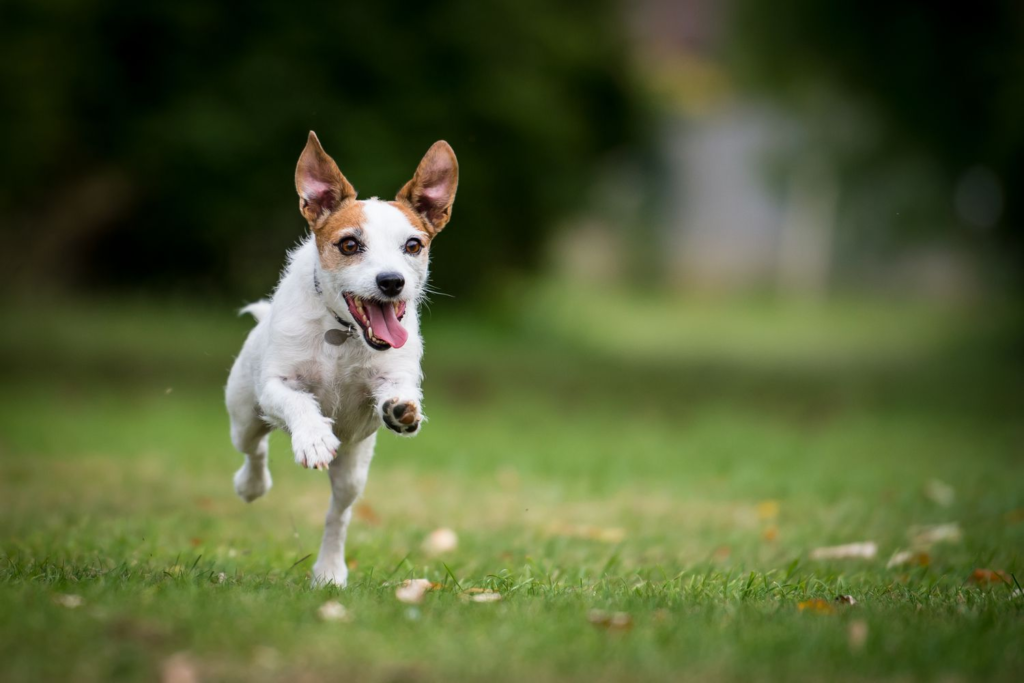Last Updated on August 31, 2023 by Fumipets
How to Safely Start Running With Your Dog
Starting a running routine with your dog can be a great way to stay active together, but it’s important to ensure the safety and well-being of your furry companion. Before embarking on this journey, it’s crucial to take gradual steps, consider your dog’s breed, age, and overall health, and follow proper guidelines to ensure a safe and enjoyable experience for both you and your dog.
Dog
Running with your canine not only benefits you, but it also benefits your companion’s well-being. That is particularly true right now when the coronavirus (COVID-19) epidemic is causing health problems for even our animal companions.
According to a recent poll, one-third of cat owners said their animals had put on weight while being quarantined. So if you’ve been considering making your canine your jogging partner, there has never been a better moment. Learn how to train your canine to be a helpful running buddy and all the safety measures you should be taking to prevent abuse and injury by reading on.
Would Your Dog Make a Good Running Partner?
You must adapt your mindset in order to run with your dog. You are now jogging with your canine, as opposed to running alone. It’s crucial that you take the time to comprehend their running technique, which might necessitate putting your own vanity on hold. The exercise will be much more pleasant for you both if you lean into the style of jogging that suits your canine.
It’s also crucial to keep in mind that some canine types aren’t suitable for serving as your jogging companion. Breeds like the border collie and greyhound might really appreciate the chance to get some exercise and sprint alongside you. Bulldogs and pugs, two breeds of brachycephalic canines with short muzzles, can sprint for only a brief distance before their breathing becomes difficult. Even types that seem to be well-suited to jogging may not always find it to be a fun form of exercise.
For instance, large types like Great Danes will find jogging too taxing on their bones and joints, while Siberian Huskies, who thrive in cooler climates and have thick fur, will easily sweat in milder weather. Long-distance running is also risky for pups, particularly those that are still developing. As a general guideline, you should hold off taking your canine on hikes until they are fully grown.
Even if your canine is an energetic type that enjoys sprinting, keep in mind that each dog has a unique demeanor. More people than others will turn to jogging. To make sure that this is a risk-free exercise for your canine, take into account his disposition, learn about his type, and take him to the doctor for a medical examination.
In the event that taking your canine on a run proves to be challenging for whatever reason, you can (and should!) spend some time learning with a qualified expert dog trainer who employs positive reward training methods. Most significantly, when training your canine to sprint alongside you, always be patient.

How Far Should You Run With Your Dog?
Start out slowly if you’ve never gone for a run with your dog before. This enables you to return to a run/walk cycle if you observe your canine is having trouble, preventing fatigue or injury. Likewise, if your canine enjoys the activity, you can gradually extend the run’s length by five minutes at a time.
Remember that leisure days are just as essential for our animal companions as they are for us people. A vacation day is essential. He continues: Ideally, you should give your canine a day off between each exercise.
You should also pay attention to how your canine behaved that day. It may be best to cut back on your runs if they appear listless and disinterested. This may entail taking more break days or making your runs shorter. The objective should be to develop a healthy jogging routine. Resting them will help them do that because they’ll be physiologically able to exercise again, achieving the long-term objective of better health.
How to Keep Both You and Your Dog Safe While Running Together
Find Running Gear That Works for You
Running with your canine requires that you use a small tether. The optimal height is between four and six feet. Your canine needs to be able to walk around easily next to you, so the tether shouldn’t be too short or lengthy. When your canine needs to be closer, using a tether with a traffic handle can be practical and improve safety when you are running in areas where there may be bicycles, other runners, or even vehicles.
For many canines, a body collar is an excellent choice; just make sure the leash is always the right size. Leg mobility should not be restricted by a properly fitted collar, and the hair will never be pinched or pulled.
Position Your Dog Correctly
The best jogging form for bodily and mental well-being is on your side with the rope loose. However, if your canine likes to lead the way, make sure they aren’t dragging and that the tether always has some wiggle room. Just make sure they stick by your side if they have a tendency to lag behind. The idea is to keep them from running straight behind you because if they do, the tether could strike or bind itself in your legs, endangering both your and your dog’s safety.
The Surface You Run on Matters
Your canine will encounter unique obstacles on every terrain. However, the most secure surfaces are gravel paths and grass, followed by sand, and then concrete.
Heat preservation is a crucial consideration in addition to the surface’s stability. For example, pathways and streets hold heat. Therefore, even if the weather is chilly, use the back of your palm to measure the pavement’s temperature before going for a run with your canine because it may still be very scorching outside. Similar to this, cold moist sand is preferred because heated arid sand can be harsh on your dog’s knees if they gallop on it for an extended period of time.
Be Mindful of the Weather
Most canines have a stable body temperature between 99.5 and 102.5 degrees Fahrenheit because of their thick coats and circulation systems. They are obviously susceptible to mild conditions. The ideal exercise temperature for us and our canines is actually between 40 and 65 °F.
Any temperature higher than that or when it’s muggy can rapidly become dangerous for your canine, particularly if they have a heavier hair. Late May through August will probably be too humid for jogging with your canine in most parts of the United States.
On the other hand, it’s crucial to understand how chilly your canine can tolerate during winter walks. Although the precise temperature at which canines become chilly differs, as we’ve previously mentioned, you shouldn’t leave your dog outside for a prolonged amount of time if the outside temperature falls to 30 degrees or lower.

Types of Dog Running Gear You’ll Need
You’ll require more than just a set of athletic sneakers if you plan to exercise with your canine.
Leash
Barrera suggests the 4-foot Kong Traffic Leash despite the fact that there are several running-specific leads available. Additionally, Barrera advises against using a flexible tether because they frequently result in accidents.
Harness
Any dog can benefit from a well-fitting collar, but they are particularly helpful if you have a canine that tugs frequently or has a delicate or slender neck. The Non-Stop Dogwear Freemotion Harness, the Tuft Mutt Dog Harness, and the Ruffwear Trail Runner System are a few excellent choices.
Water
Since your canine is unable to speak, it is your duty to provide for their needs in terms of drinking breaks. Because of this, it’s crucial to bring a portable dish and a water container along with you when you go for walks. A parched breath, heavy wheezing, and a sudden slowdown of the speed are some symptoms of dehydration to watch out for.
Portable First-Aid Kit
When you’re hiking and may not have access to urgent medical care, look into making a small, compact handmade first aid package that you can take.
Tick Protection
Running with canines raises serious concerns about tick infections. Fortunately, there are a number of methods to avoid this. Make sure to stay on a route and away from all of the vegetation if you’re jogging on highly forested paths.
To make sure your canine is safe, you should examine him thoroughly for parasites after each exercise. If you discover any, remove them from his body as soon as possible.
Finally, discuss which insect prophylactic is best for your canine with your doctor. There are many lotions, conditioners, and dietary medications that can safeguard your companion, but most veterinary experts advise using a monthly prophylactic to keep bugs at bay.
Poop Bags
While it may be optimal for your companion to go potty before you head out on the path together, sometimes nature makes an impromptu appearance! Always have a doggie doo sack on hand or this wonderful eco-friendly alternative to gather up their waste.
Bonus points if you can plan your route to take you close to the canine park so you can empty the trash container specifically for dogs and avoid lugging it the entire distance of your exercise (we’ve all done it). Simply carry a bag in your purse in case your dog needs to relieve themselves if you don’t want to deal with the bulk of a feces bag container. Being secure is preferable to being regretful.
Q&A about Safely Running With Your Dog:
1. Is my dog physically ready for running?
Assess your dog’s health with a veterinarian. Factors such as age, breed, and existing health conditions play a role in determining whether your dog is physically fit for running.
2. How should I prepare before starting to run with my dog?
Start with regular walks to build your dog’s stamina. Gradually increase the intensity and duration over several weeks to prevent injuries.
3. Are certain breeds better suited for running?
Breeds with a predisposition for endurance and physical activity, such as Labrador Retrievers and Border Collies, are often better suited for running. However, individual variation matters, so consult your vet.
4. What safety measures should I take while running with my dog?
Use a properly fitted harness to prevent strain on the neck and a non-retractable leash for better control. Keep your dog hydrated and watch for signs of exhaustion or discomfort.
5. How can I avoid running-related injuries in my dog?
Avoid running on hard surfaces like asphalt, especially for dogs with joint issues. Pay attention to your dog’s pace and any signs of limping, and consider using paw protection if needed.


















